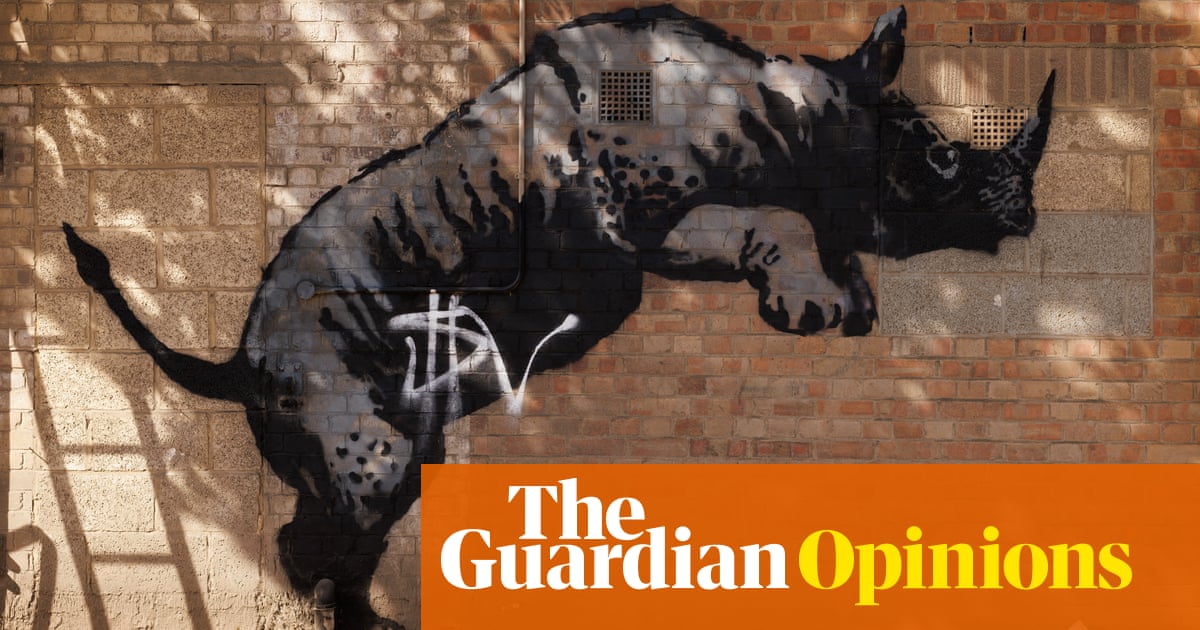This month, several stencilled artworks by the elusive street artist Banksy have been defaced or removed. These include his Nissan-trampling rhino, his satellite-dish wolf, and a hoarding-bound big cat, some disappearing mere hours after their public debut.
While the wolf's removal could be attributed to a commissioned theft or an opportunistic grab, the incident mirrors the public removal of Banksy works by official property owners. Often cut out of walls and sold at auction, these pieces could be argued to have been stolen from the public, where they rightfully belong.
However, the erasure of Banksy's art is complicated by the art form itself. Graffiti, by its nature, undergoes "cross-out wars," where one artist superimposes their work over another's, leaving enough of the original to establish dominance. Banksy's works have experienced this before, as shown by his dispute with the late King Robbo.
While the recent removals seem more opportunistic than traditional graffiti beef, taking place in broad daylight and employing non-traditional methods, they still offer a captivating glimpse into the world of street art. As an anthropologist studying graffiti for over two decades, I find this saga incredibly fascinating.
Graffiti is meant to decay and fade naturally, not be preserved like a gallery piece. The conservation of these public works by private entities, as exemplified by Banksy's pieces encased in protective plexiglass, contradicts a fundamental characteristic of graffiti: its impermanence.
Banksy's art operates outside the museum's rules, where preservation and stasis are paramount. Their destruction, in a way, could be seen as an act of preserving the ideals of graffiti practice itself.
More importantly for graffiti artists, public works should remain public, never bought and sold. However, the deliberate destruction of Banksy works by graffiti writers isn't simply a critique of his commercial success, as some suggest.
Banksy doesn't directly profit from his public works, as they are sold on the secondary market with no artistic royalties. The real issue for many graffiti writers is the use of the street for economic gain. Destroying these works prevents them from being monetised.
How would Banksy feel about all this? In the graffiti world, destruction is a common and accepted part of the game. The moment a work is complete, the countdown to its eventual erasure begins. Impermanence is paramount, and as long as the image is documented (through memory or photographs), the work is considered complete. Given Banksy's background within the graffiti subculture, he likely feels sanguine about the situation.
While the destruction of Banksy works is universally condemned by art enthusiasts and institutions, local councils and heritage organisations routinely remove graffiti at a relentless pace, without any public outcry.
The erasure of graffiti is the default mode. In the past, other Banksy works have been lost in this way, sometimes to the horror of those responsible for their removal. What constitutes art (worthy of preservation) and what is considered vandalism (destined for destruction) is often tied to financial, rather than aesthetic, value.
With cities increasingly suffocated by advertising, why are only images with financial value, be it art or adverts, considered acceptable components of urban landscapes? Graffiti artists in the UK continue to face imprisonment for placing pigment on a surface, often public rather than private. Yet, street artists like Banksy get away with the same act due to subjective decisions about what constitutes art. Why is the right to the city granted only to those who can pay, or for things deemed valuable?
Banksy may be unbothered, or at least unsurprised, by the destruction of his artwork, as it is a risk inherent to the graffiti game. The rest of us should be more concerned when other artists have their works removed or face imprisonment for creating art. And, more importantly, who is truly vandalising our cities today?
If we must choose between graffiti writers and corporate advertisers, my aesthetic preferences are clear.
Rafael Schacter is an anthropologist and curator working on public and global art. His fourth book, Monumental Graffiti, will be published in October.
Article
Entertainment

Banksy's Art Destroyed: Is He Cheering? A Look at the Graffiti Game

